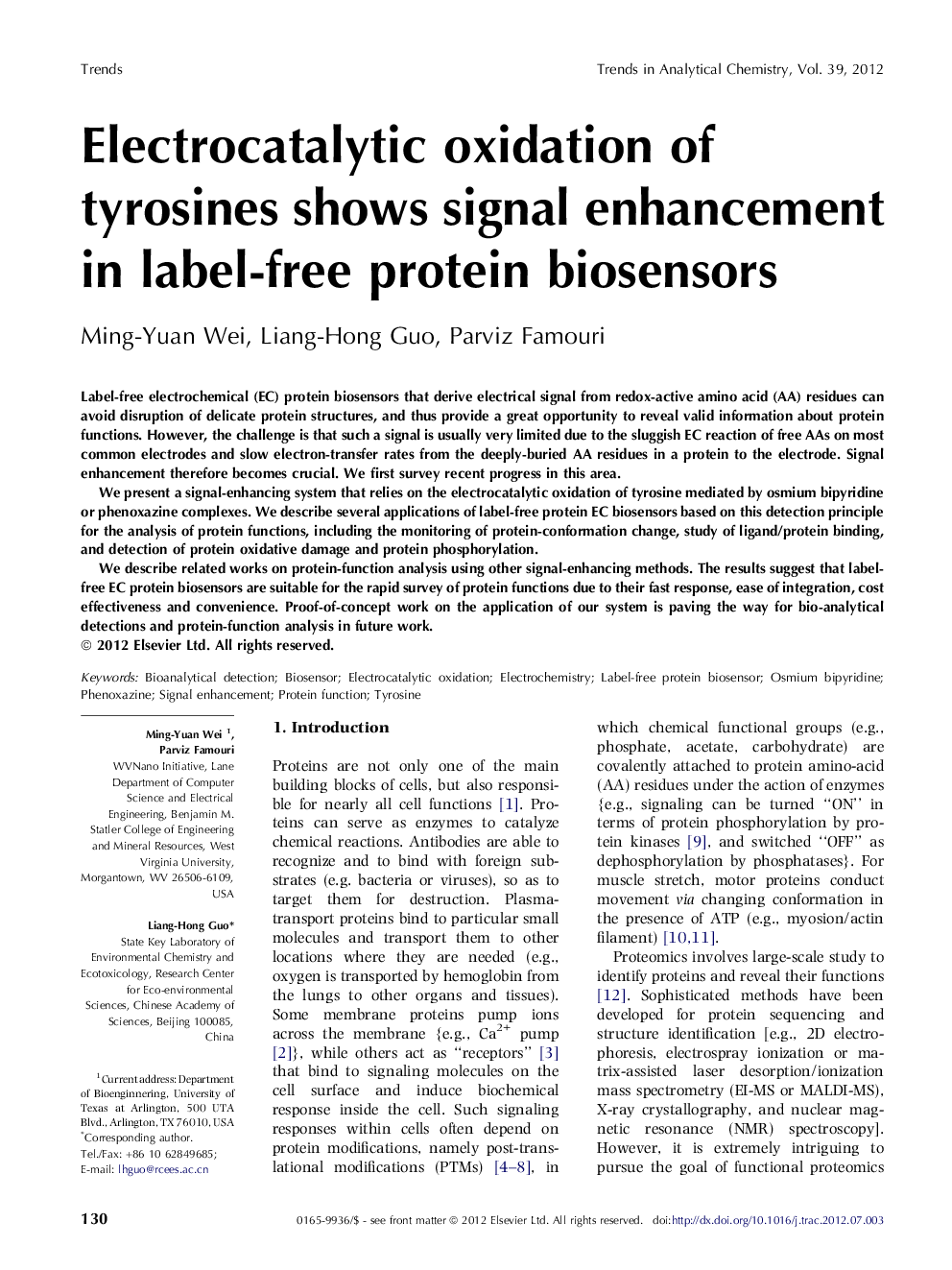| Article ID | Journal | Published Year | Pages | File Type |
|---|---|---|---|---|
| 1248058 | TrAC Trends in Analytical Chemistry | 2012 | 19 Pages |
Label-free electrochemical (EC) protein biosensors that derive electrical signal from redox-active amino acid (AA) residues can avoid disruption of delicate protein structures, and thus provide a great opportunity to reveal valid information about protein functions. However, the challenge is that such a signal is usually very limited due to the sluggish EC reaction of free AAs on most common electrodes and slow electron-transfer rates from the deeply-buried AA residues in a protein to the electrode. Signal enhancement therefore becomes crucial. We first survey recent progress in this area.We present a signal-enhancing system that relies on the electrocatalytic oxidation of tyrosine mediated by osmium bipyridine or phenoxazine complexes. We describe several applications of label-free protein EC biosensors based on this detection principle for the analysis of protein functions, including the monitoring of protein-conformation change, study of ligand/protein binding, and detection of protein oxidative damage and protein phosphorylation.We describe related works on protein-function analysis using other signal-enhancing methods. The results suggest that label-free EC protein biosensors are suitable for the rapid survey of protein functions due to their fast response, ease of integration, cost effectiveness and convenience. Proof-of-concept work on the application of our system is paving the way for bio-analytical detections and protein-function analysis in future work.
► Work on electrochemical (EC) biosensors for protein function analysis is reviewed. ► Focus is on label-free EC sensors based on electrocatalytic oxidation of tyrosines. ► Studies on protein conformation change and ligand binding are described. ► Detection of protein oxidative damage and protein phosphorylation is described.
